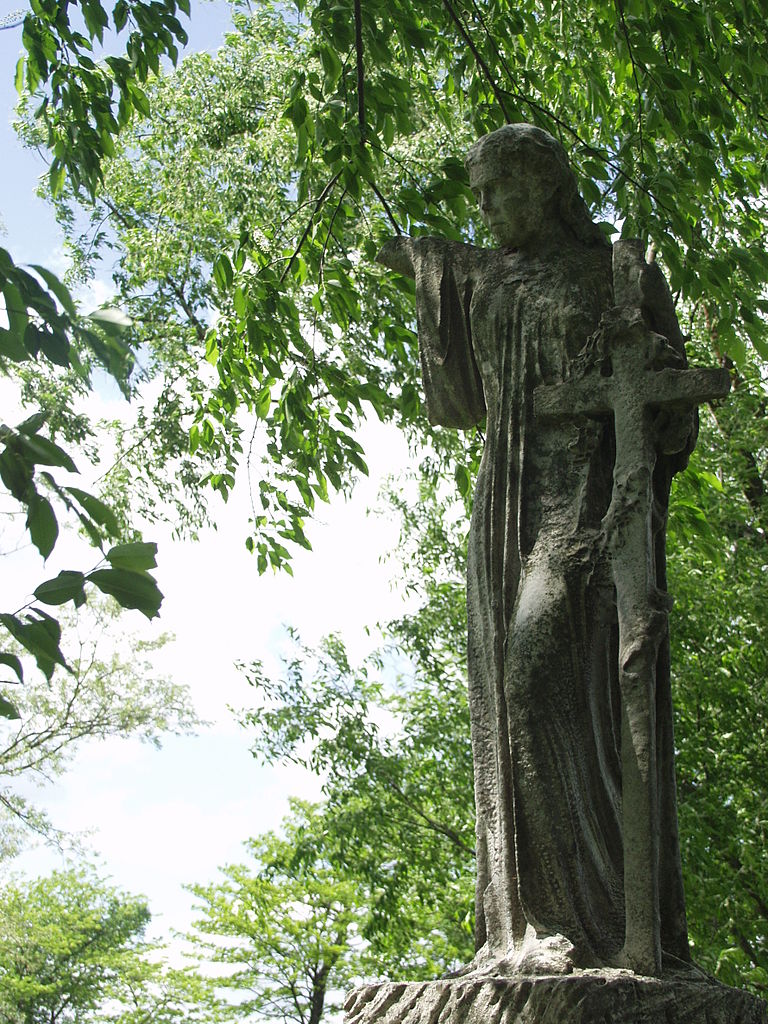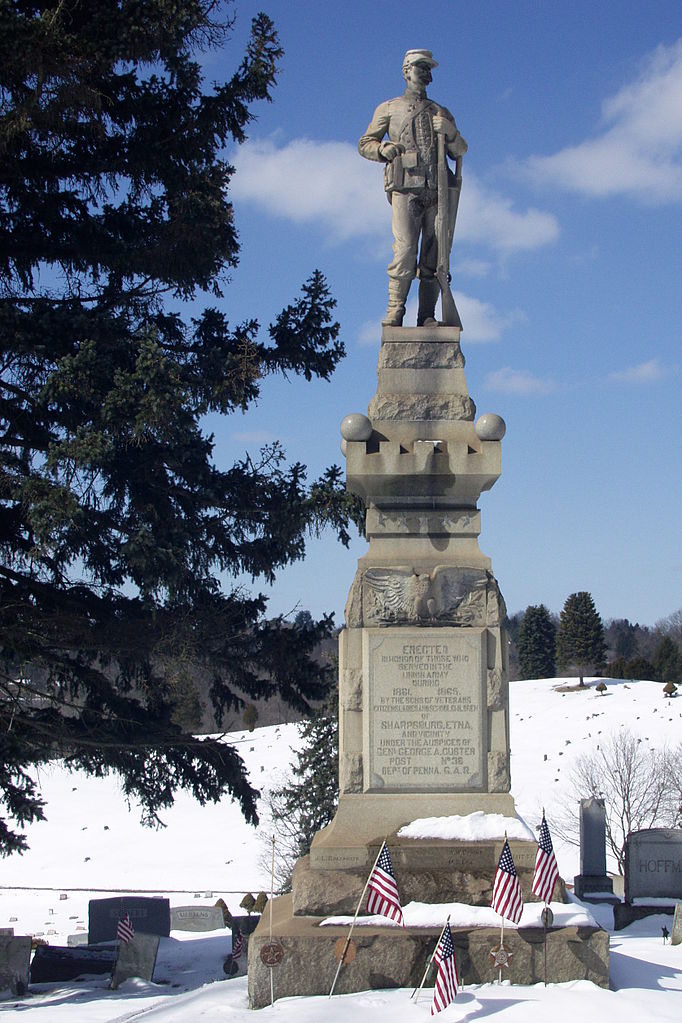The earliest burial in the shadow of this monument seems to be Nelson P. Reed in 1891, which we may take as the approximate date of the monument. The figure on the top clutching a cross is a good though not great piece of sculpture, and it is very striking silhouetted against the right kind of sky.
-
Reed Monument, Allegheny Cemetery
-
Schusler Family Plot, Allegheny Cemetery
There are some forgotten corners of the Allegheny Cemetery that look as though they might have originally been small graveyards later absorbed into the cemetery. The Schusler plot is in one of those corners. The plot is marked by an obelisk, probably erected in 1872; but a monument to an eighteen-year-old daughter (whose statue is sadly mutilated) is scarcely less grand.
Religion filled her soul with peace
Upon a dying bed.
Let faith look up. Let sorrow cease
She lives with Christ o’erhead.
We miss thee from our home, Maggie,
We miss thee from thy place.
A shadow o’er our life is cast,
We miss thy smiling face. -
Heeren Monument, Allegheny Cemetery
Gustav Heeren died in 1885, and that is probably the date of this curious monument, which seems determined to confront us with everything that is excessive about Victorian romanticism. The sculpture itself is a work of some skill, but it is very “romantic” in the sense in which old Pa Pitt once defined the term: “The essence of the romantic style in cemetery monuments, Father Pitt has decided, is the peculiar combination of realism in details with unlikeliness in composition.” Among the many odd things: the sculpture is a bronze that appears to have been painted black, perhaps in an attempt to arrest corrosion.
-
Civil War Memorial, Greenwood Cemetery
In memory of the soldiers from Sharpsburg and Etna and the surrounding area. The statue is typical of this sort of memorial: not exactly crude, but not subtle. The monument was erected by a post of the Grand Army of the Republic named for General George A. Custer, whose later reputation tends to obscure his successes in the Civil War.
-
McCandless-Johnston Monument, Allegheny Cemetery


















